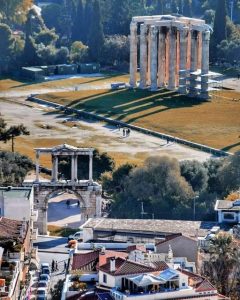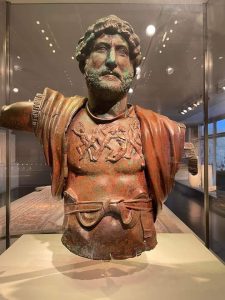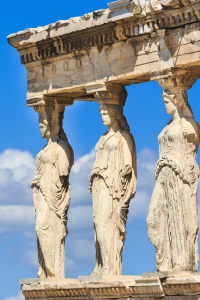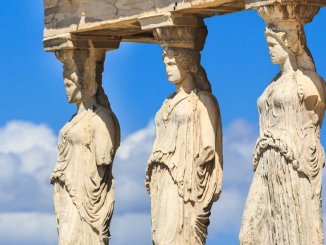Nestled within the vibrant cityscape of Athens, the Temple of Zeus stands as a monumental tribute to the king of the Olympian gods, offering a serene yet profound glimpse into the ancient world. The image captured here is not merely a photograph; it is a journey back in time, where the majestic ruins of the temple rise above a modern pathway lined with lush trees and casual cyclists, bridging the past with the present.
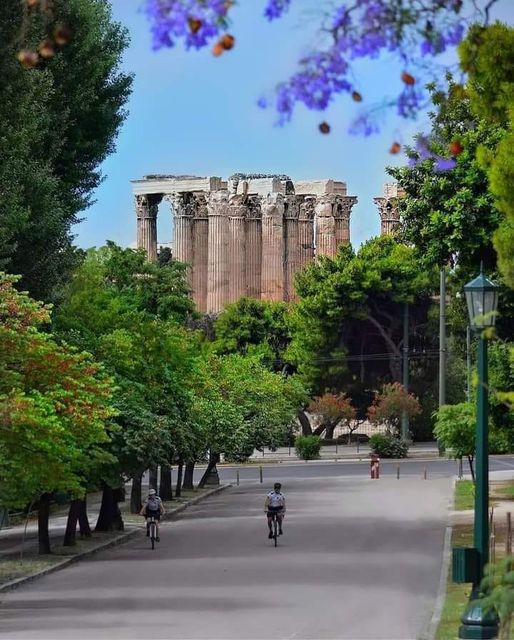
Constructed over several centuries, beginning in the 6th century BC and completed by the Roman emperor Hadrian in the 2nd century AD, the Temple of Zeus was once one of the largest temples in the ancient world. Today, although only a few of the original Corinthian columns remain standing, their formidable presence continues to dominate the Athens skyline, evoking the city’s rich historical tapestry.
The Temple, also known as the Olympieion, is strategically located at the heart of Athens, near other historical landmarks like the Acropolis and the ancient Agora, forming a golden triangle of classical heritage. This central location underscores its historical significance, not just as a place of worship but as a focal point of civic life, where citizens of ancient Athens would gather for various festivities and ceremonies dedicated to Zeus.
The lush greenery surrounding the temple in the photograph highlights how modern Athens has embraced its ancient roots, integrating these historic sites into the daily lives of its residents and the countless visitors drawn to this iconic city. The view through flowering jacaranda trees in the foreground adds a splash of color and life to the ancient stones, suggesting a harmony between nature and archaeology that is rarely seen in urban settings.
Walking along the paths that encircle the Temple of Zeus, one can’t help but reflect on the architectural innovation and artistic mastery of ancient Greek civilization. The temple originally housed a massive statue of Zeus, which mirrored the statue of Athena in the Parthenon, symbolizing the balance and duality of divine power within the city.
For those visiting Athens, the Temple of Zeus is more than just an archaeological site; it is a vibrant part of the city’s soul. It invites onlookers to pause and appreciate the grandeur of what was, amidst the hustle and bustle of what is. Whether you are a history buff, an architecture enthusiast, or simply in search of a picturesque stroll, the Temple of Zeus offers a unique opportunity to experience the legacy of ancient Greece firsthand.
As Athens continues to evolve, the enduring presence of the Temple of Zeus serves as a constant reminder of the city’s glorious past, standing proudly at the crossroads of history and modernity.
